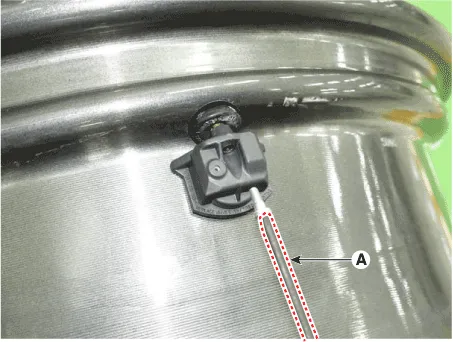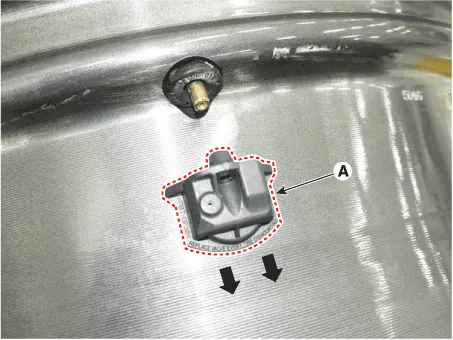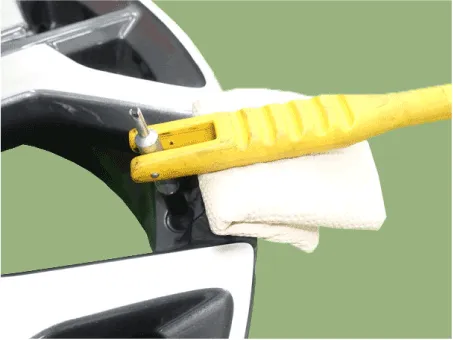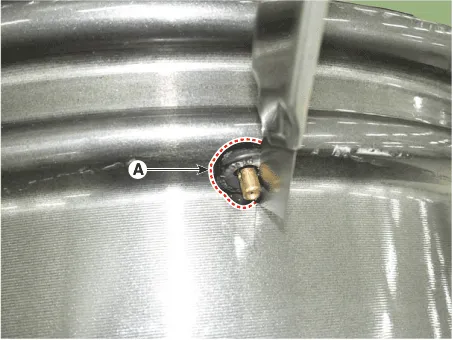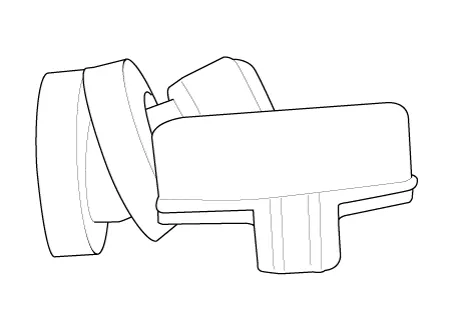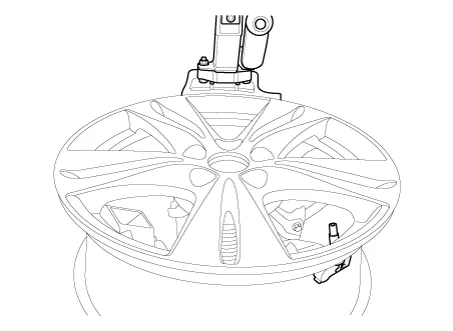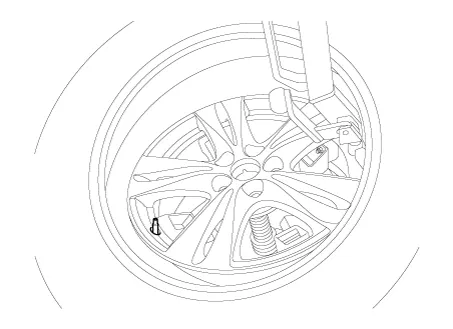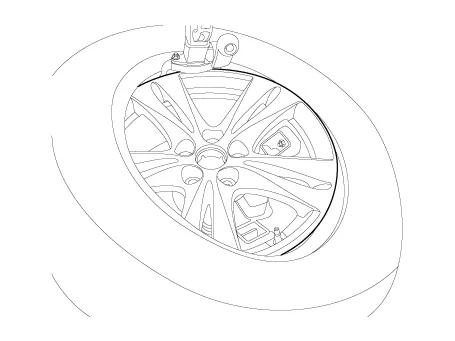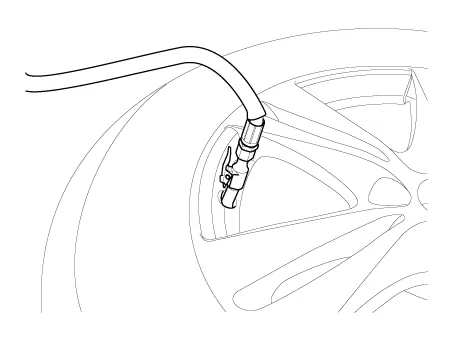Hyundai Elantra (CN7): Tire Pressure Monitoring System / TPMS Sensor
Description and operation
| Description |
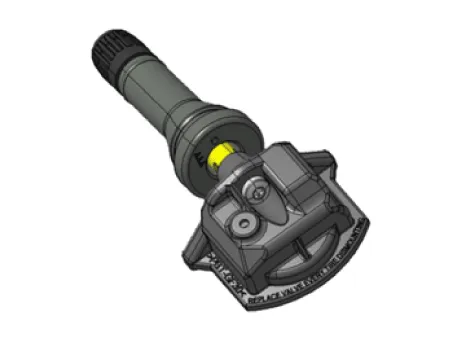
| 1. | Function
|
| 2. | Structure and features
|
| 3. | Mode
|
| • | After stopping or parking for more than 19 minutes, automatic learning function in every driving position is performed. |
| • | The sensor is converted to Parking Mode when stopped or parked for more than 15 minutes. When acceleration of over 4g (15-20km/h) is detected in Parking Mode, it is converted to First Block Mode. |
Repair procedures
| Removal |
| 1. | Remove the wheel and tire. (Refer to Suspension System - "Wheel") |
| 2. | Remove the screw with torx driver (A).
|
| 3. | Remove the sensor body (A) in the direction of the arrow.
|
| 4. | Use the valve mounting tool to pull out the valve until it is entirely out of the lower hole.
|
| 5. | Apply lubricant to the surface of the new valve, and then mount it through the valve hole of the wheel.
|
| 6. | Apply soapy water or lubricant to the upper/lower bead section of the tire.
|
| 7. | To fit the bottom bead, position the sensor at the 5 o’clock position relative to the head on the tire changing machine
|
| 8. | Rotate the rim clockwise, and push down on the tire at the 3 o’clock position to fit bottom bead.
|
| 9. | Push down on the tire at the 3 o’clock position and rotate the rim clockwise to fit the top bead.
|
| 10. | Inflate the tire until beads seat.
|
| 11. | Adjust the tire pressure according to the recommended tire pressure for the vehicle.
|
| 12. | If the TPMS sensor malfunctions, you must perform TPMS sensor learning. Replace any faulty sensors and perform TPMS sensor learning. |
| Diagnostic Procedure Using a Diagnostic Instrument |
| 1. | Connect the diagnostic instrument to the self-diagnostic connector (16-pin) beneath the crash pad on the side of driver's seat, and then turn on the ignition to activate the diagnostic instrument. |
| 2. | In the GDS Vehicle Type Selection menu, select "Vehicle Type" and "TPMS" System, and then opt for "OK." |
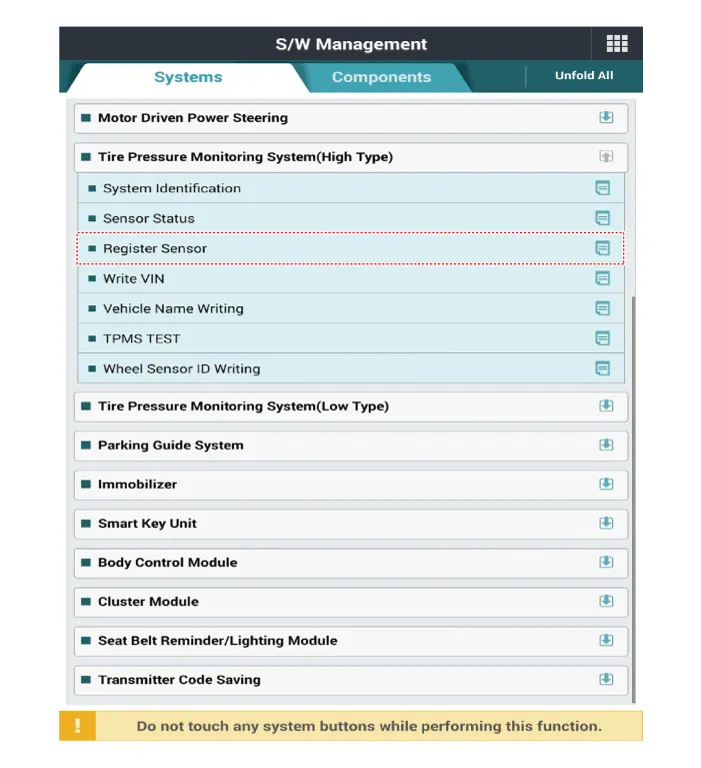
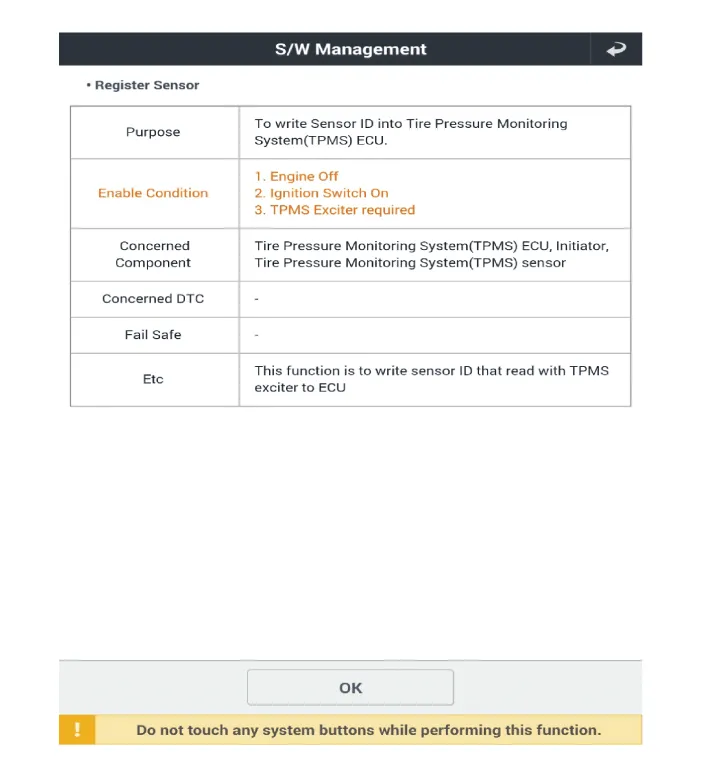
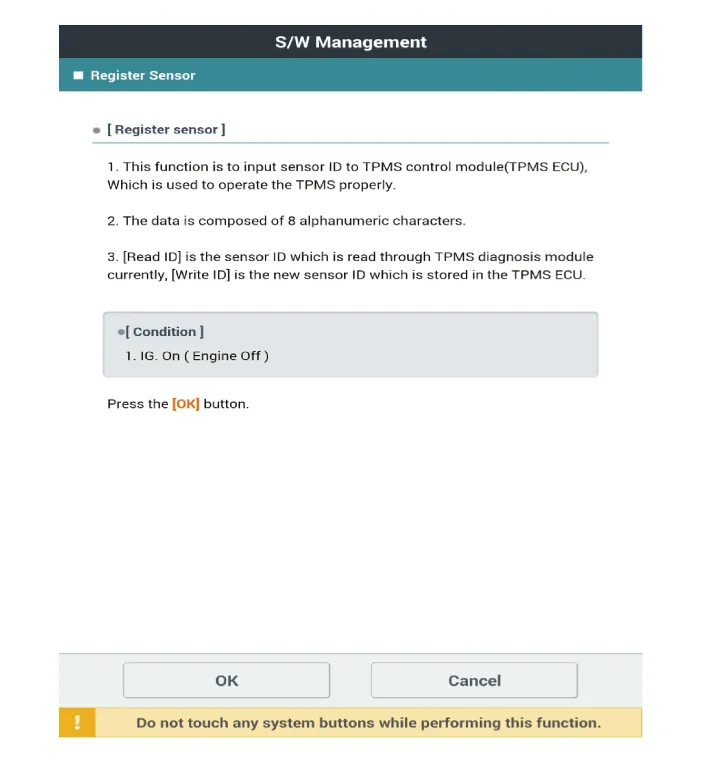
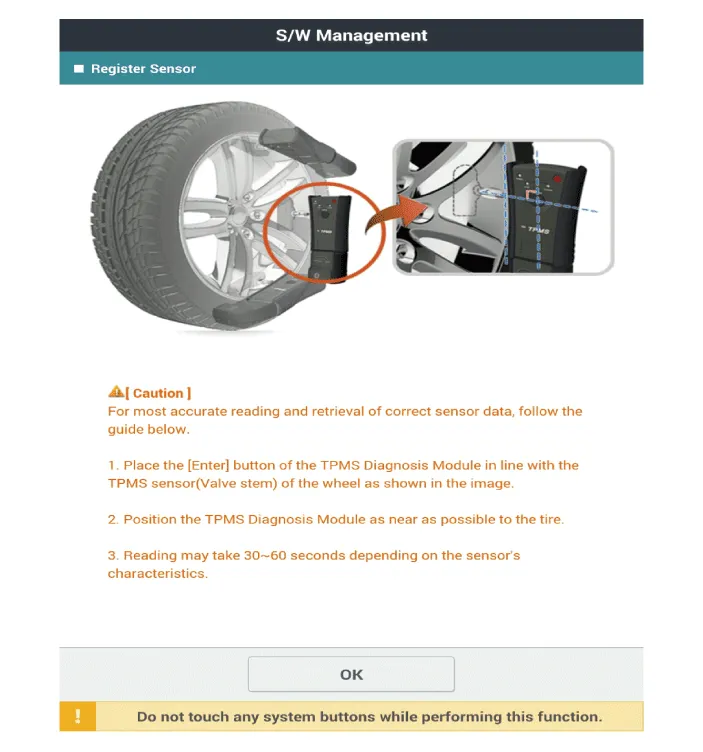
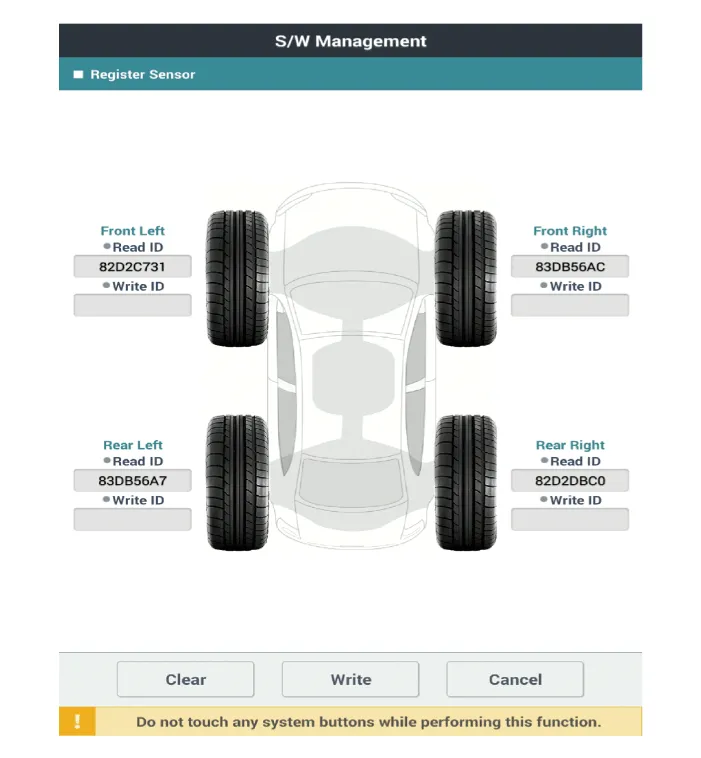
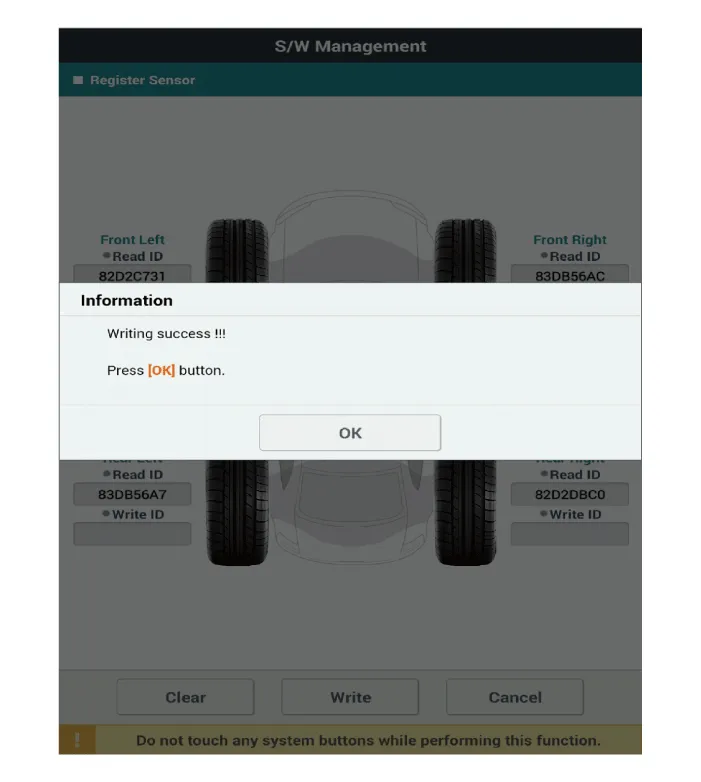
|
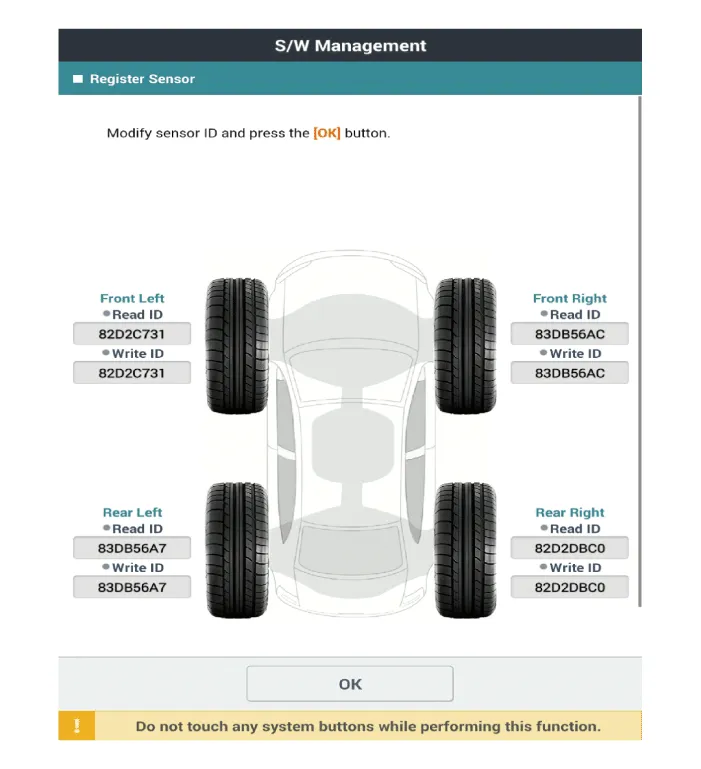
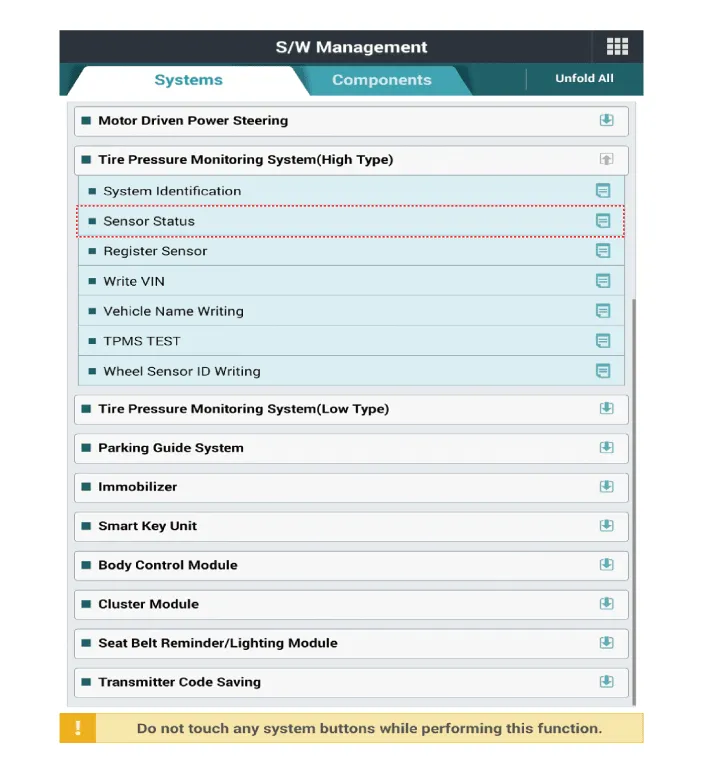
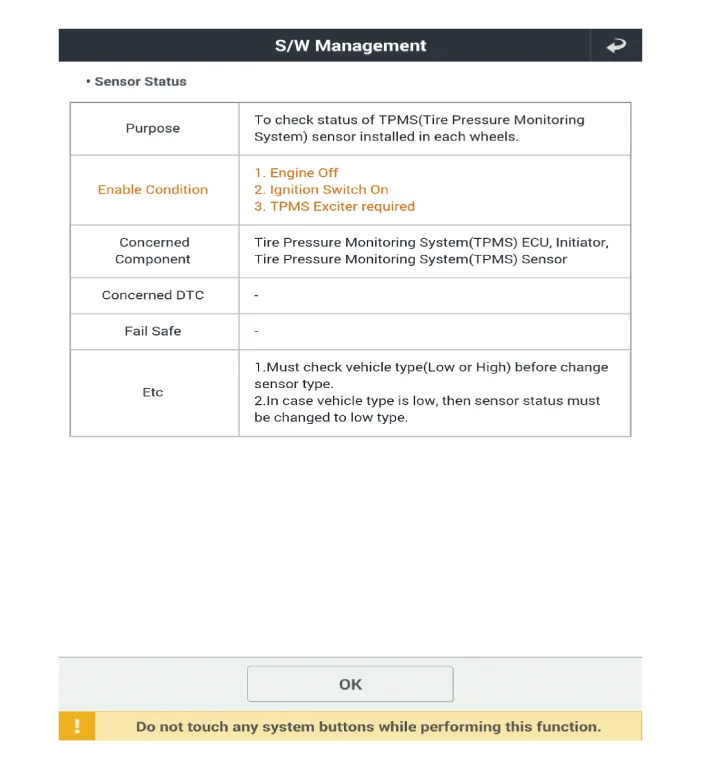
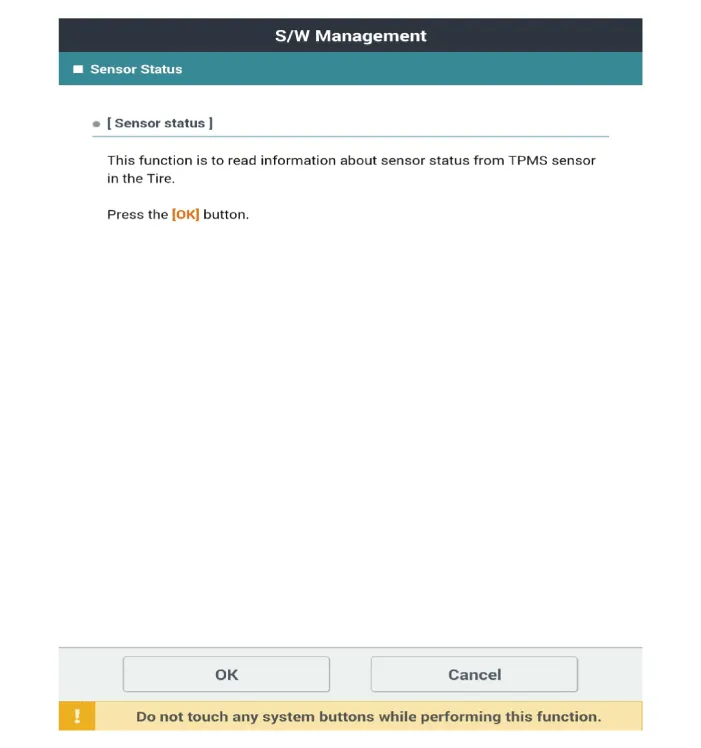
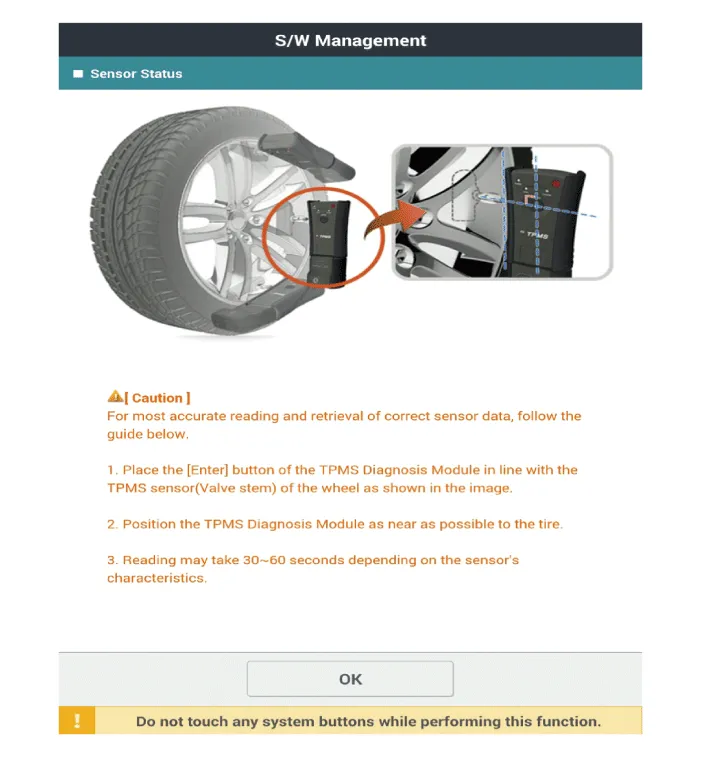
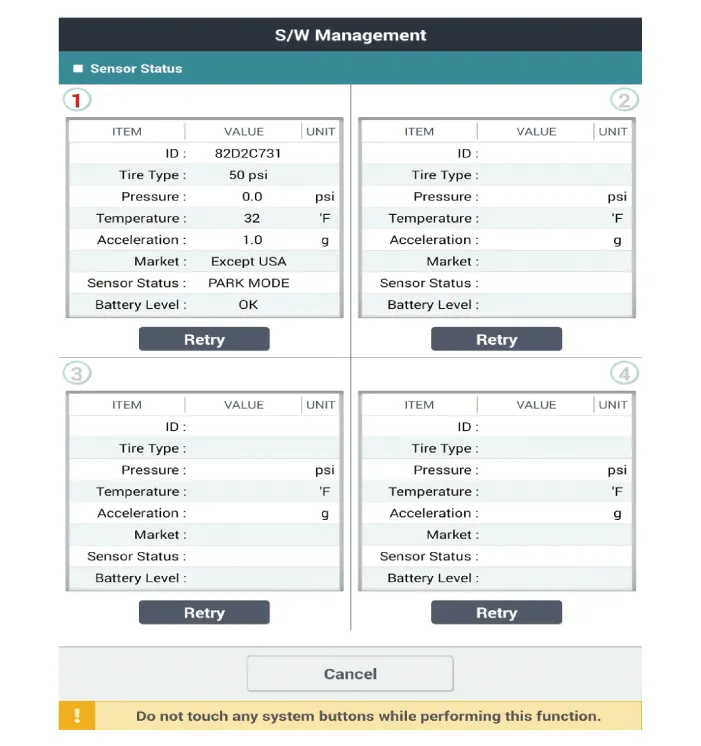
|

TPMS Inspection method
Description and operation DescriptionTPMS Receiver : BCM(body control module) integrated management1.Early state• Platform information and sensor ID are not input.
Other information:
Hyundai Elantra (CN7) 2021-2026 Service Manual: Wireless Charging Lamp
Components and positions Components Repair procedures Removal • Handling wireless charging system parts by wet hands may cause electric shock. 1.Disconnect the negative (-) battery terminal.2.Remove the floor console upper cover assembly.
Hyundai Elantra (CN7) 2021-2026 Service Manual: A/C Pressure Transducer
Description and operation DescriptionThe A/C Pressure Transducer (APT) converts the pressure value of high pressure line into voltage value after measuring it. By converted voltage value, engine ECU controls the cooling fan by operating it high speed or low speed.
Categories
- Manuals Home
- Hyundai Elantra Owners Manual
- Hyundai Elantra Service Manual
- Recommended Lubricants and Capacities
- Auto Hold. Warning messages
- Drive Mode
- New on site
- Most important about car


